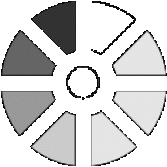Guide to Massive Open Online Courses (MOOCs)
MOOC - Massive Open Online Courses are open learning resources to study towards any programme or just to learn new lessons you are most passionate about. The MOOCs are designed, developed and delivered by experts who has a massive say in their domain. The MOOCs enables you to learn anytime, anywhere, with the help of internet. You need only a reliable computing device that can connect you to an MOOC library and there are hundreds. The MOOCs gives leverage to study any course whether its available in your local area or not. In addition when you learn from an MOOC database of programmes your knowledge is not limited to what has been taught or written in a few books but you also know expert opinion from beyond the borders. MOOCs are rich resources to study and enhance your knowledge and skills. An MOOC programme is open to all.
Quick Facts on MOOC
- MOOC stands for a Massive Open Online Course.
- It is an online course aimed at large-scale participation and open (free) access via the internet.
- They are similar to university courses, but do not tend to offer academic credit.
- A number of web-based platforms (initiatives) supported by top
universities and colleges offer MOOCs in a wide range of subjects.
History of Massive Open Online Course (MOOC)
Open CourseWare has been used by the education institutions like Massachusetts Institute of Technology (MIT) since decades providing access to universities lectures and other tools to enhance elearning experience. The Canadian educator George Siemens developed a theory called connectivism that could explain changes in education after the popularisation of technology inside and outside classrooms. Using this theory, Siemens partnered with Stephen Downes to develop a new format of online course that is open for anyone interested. That class was Connectivism and Connective Learning/2008 (CCK/08), that allowed students to create their own Personalised Learning Environments (PLEs) and share interconnected knowledge.
Antecedents to the MOOC
We will have to mention here other antecedents to the MOOC- Khan Academy, a non-profit provider of video lectures and exercises on a variety of subjects and now best-known teachers in the world and is iTunes U launched by Apple in 2007 to offer education materials for download.
That has grown into Khan Academy, a non-profit provider of video lectures and exercises on a variety of subjects and now, although Khan isn’t a formally trained educator, he is one of the best-known teachers in the world.
Another antecedent to the MOOC is iTunes U, launched by Apple in 2007 to offer education materials for download. Many colleges and universities joined the site, creating courses especially designed for the format or simply posting podcasts, video lectures or textbooks for free download by anyone in the world.
The first MOOCs emerged from the open educational resources (OER) movement. The term MOOC was coined in 2008 by Dave Cormier of the University of Prince Edward Island and Senior Research Fellow Bryan Alexander of the National Institute for Technology in Liberal Education in response to a course called Connectivism and Connective Knowledge (also known as CCK08).
Different theories around the MOOC Models
Knowledge: Most us as a student have gained our knowledge from our teachers. And it is easy to replicate the knowledge rather than generating. But we should always remember that creating and then sharing is actually giving knowledge. The learners should always try to create some thing new of their own and share - it can be through blogs, articles, videos or images.
Social Networking: With the availability of different platform like facebook, twitter, google groups, wikipedia, youtube, plurk and many more the knowledge can be shared on a vast basis and in a faster way.
Synchronization: Another important aspect of learning is synchronization. We do not align ourselves to the course content and the guide; we align ourselves to other learners and the the knowledge they share.
Resonance: Is again very important, as it helps in filling the gaps in MOOCs. Resonance is concerned with why some ideas are easily merge with my pre-existing knowledge. While others become “integratable” later on.
Self learning: . At the base of MOOCs, is the approach to motivate the learners for creating an identity for themselves and not just depend on learning.
Connectivism: As the world is becoming more digitalised and everyday new technologies are coming up. Therefore it is easy to share knowledge in a faster and easier manner i.e, just by staying connected.
Coherence: In the traditional way of learning, the teachers guides and the learners takes the knowledge. The gained knowledge can be validated through assignments, quizzes, tests etc. But with MOOC, the learners themselves have to be more prompt and kerning enthusiast. The learner himself finds his way by exploring from the many dimension of a field.
Focused and Innovative: It is a common saying "the only constant thing in life is change". Since the world we live in is changing so fast, so are the the difficulties we face. Therefore answering them in the traditional way will not yield the desired result. With MOOCs , we attempt to emulate connective and integrative knowledge
 Processing...
Processing...
 Processing...
Processing...